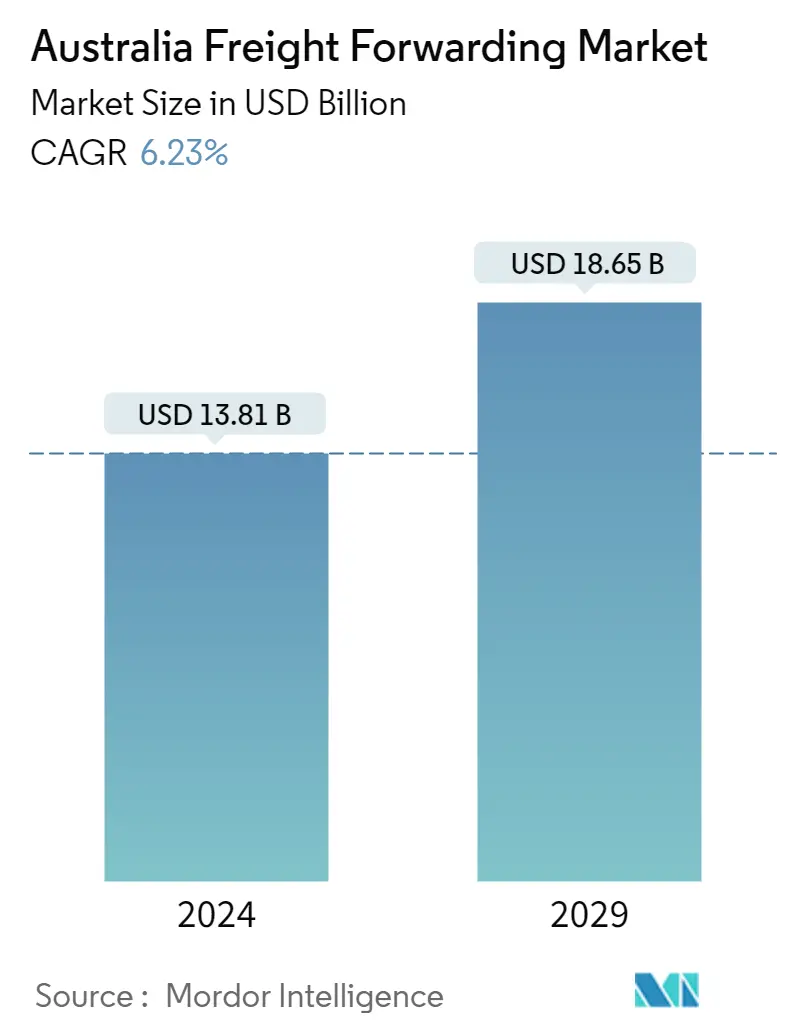Market Size of Australia Freight Forwarding Industry

| Study Period | 2019 - 2029 |
| Base Year For Estimation | 2023 |
| Market Size (2024) | USD 13.81 Billion |
| Market Size (2029) | USD 18.65 Billion |
| CAGR (2024 - 2029) | 6.23 % |
| Market Concentration | Low |
Major Players
*Disclaimer: Major Players sorted in no particular order |
Need a report that reflects how COVID-19 has impacted this market and its growth?
Australia Freight Forwarding Market Analysis
The Australia Freight Forwarding Market size is estimated at USD 13.81 billion in 2024, and is expected to reach USD 18.65 billion by 2029, growing at a CAGR of 6.23% during the forecast period (2024-2029).
- Over the last four decades, Australia's domestic freight challenge continuously grew, with road and rail freight increasingly dominating domestic freight activity. Iron ore rail transport in the Pilbara area generated a massive surge in rail freight tasks. An efficient, sustainable, and cost-effective freight and logistics business supported by collaboration with all levels of government supports Australia's rising economy and ambitions for a high quality of life.
- The COVID-19 epidemic resulted in an exponential spike in parcel movements, particularly e-commerce deliveries, placing Australia Post's pre-existing delivery model under duress. Similarly, the freight and logistics business saw comparable effects across the country, notably during the pandemic's need for home delivery of food and medical supplies. Road freight is the most common means of transport for urban, inter-urban, and regional freight, and it is an essential component of the supply chain for the majority of imports in Australia.
- A rising population places an increasing strain on the distribution network, even if merely to fuel basic consumption. Daily supply chain food activities, for example, grow in bulk as demand grows. It needs more room to accommodate the rising quantities. Melbourne is on course to become Australia's largest city by 2029. The Australian government is key to the long-term planning, development, and management of transportation networks that serve Australia's expanding freight needs. It is dedicated to producing a national freight and supply chain plan to boost Australia's freight and supply chains' productivity and efficiency.
